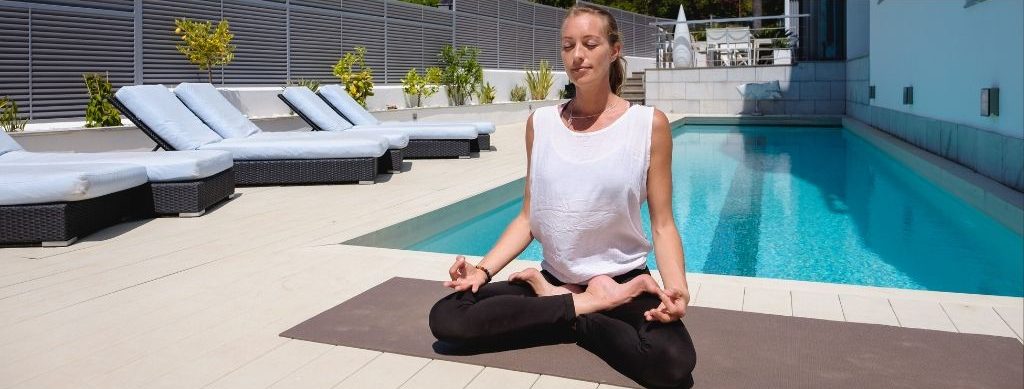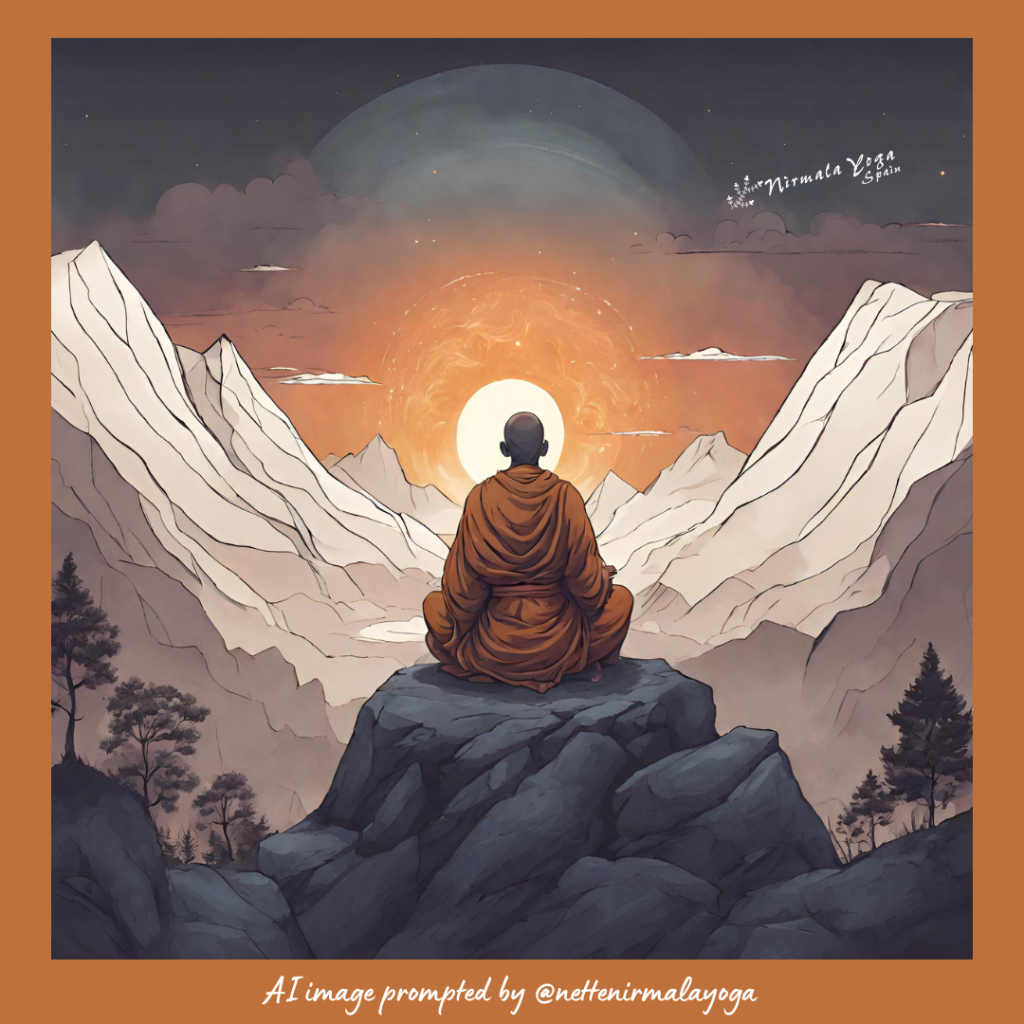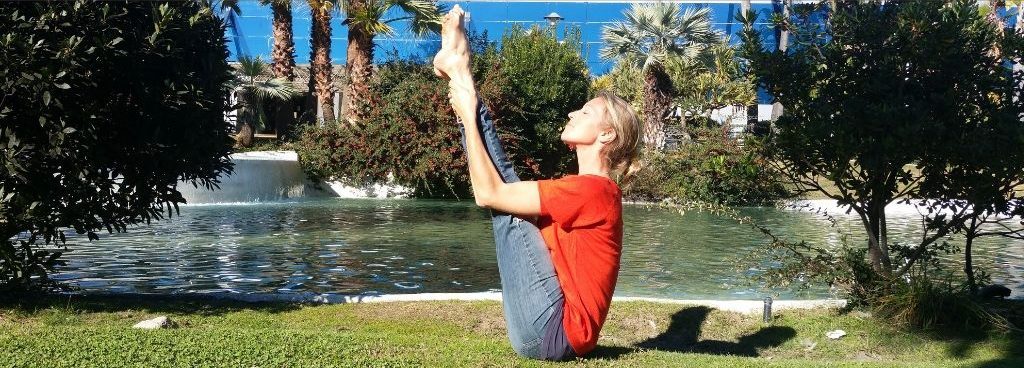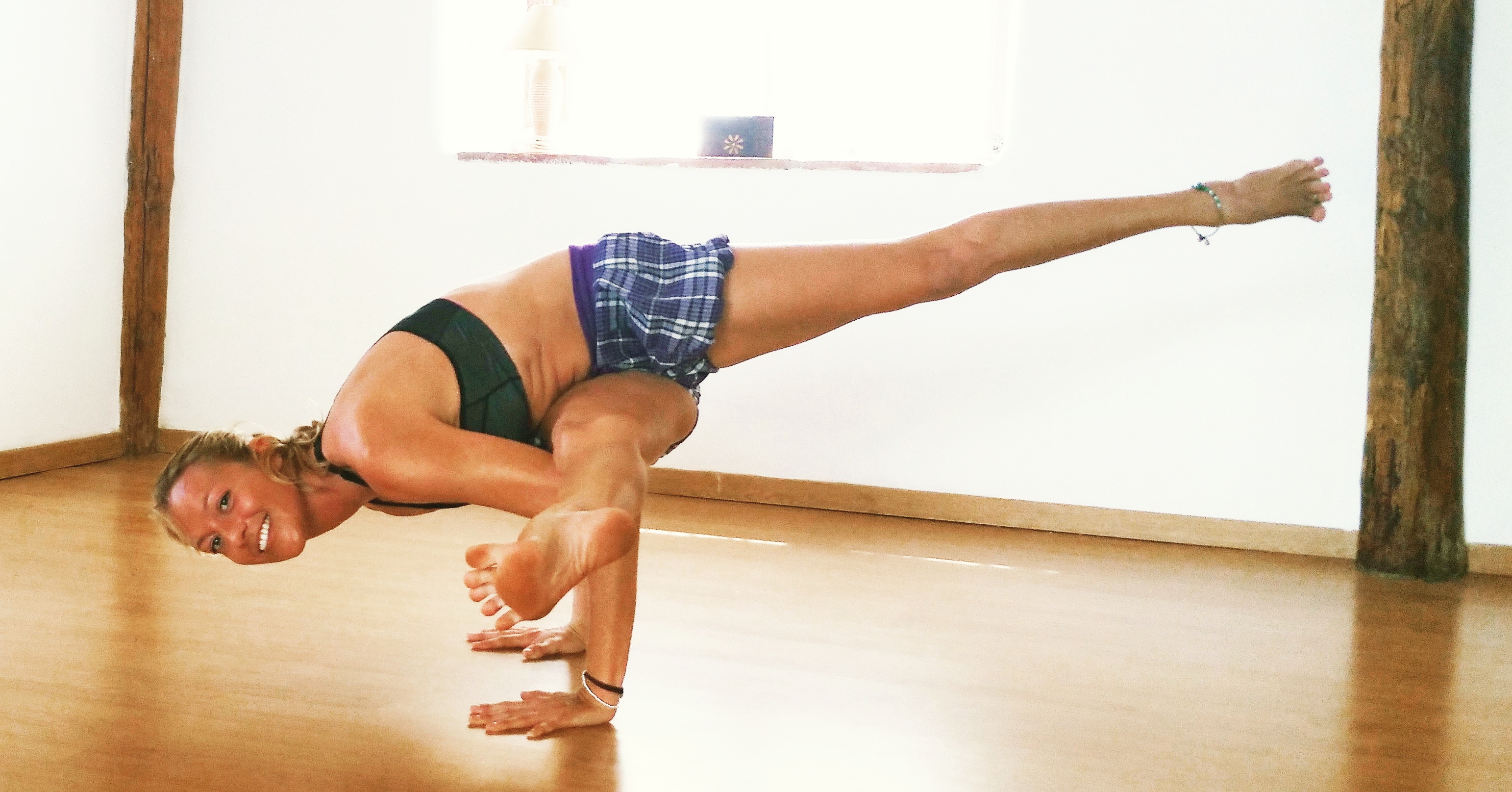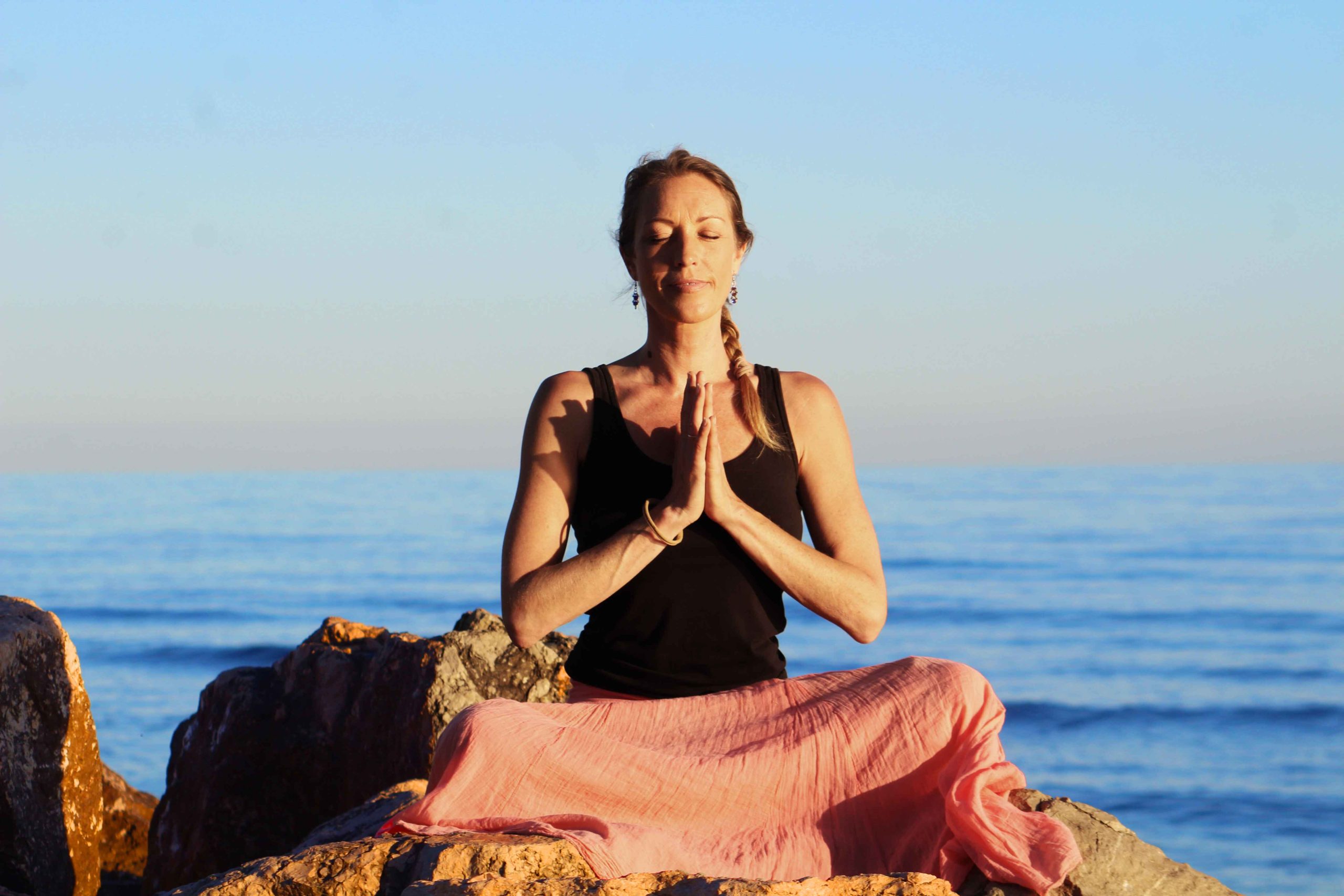Meditation: Unlocking Inner Peace
Meditation isn’t some unattainable, esoteric, mystical practice reserved for yogis sitting in perfect lotus pose.
It’s not confined to serene mountaintops or candlelit rooms.
Meditation is accessible to everyone, regardless of age, flexibility, or lifestyle.
And you can tap into its transformative power anytime, anywhere. Perhaps while sitting in a cafe, or standing in a queue, or laying down to go to sleep. You can even practise forms of moving meditation, but more on that later!
Discovering Stillness: A Case for Meditation
So, why should you try meditation?
Because your well-being deserves it! Meditation is great for heart & brain health along with boosting your entire immune system. It significantly reduces stress, anxiety & depression and helps increase focus & cognitive function.
Our fast-paced, hyperconnected world bombards us with information from all angles. Our senses are constantly stimulated – infinitely more so than any of our ancestors throughout human history – and our minds must race to keep up. This is not a natural state for humans to constantly be in, nor is it a healthy one. But don’t worry – meditation is an antidote to this sensory overload. It’s not about escaping reality; it’s about finding stillness within the cocophany.
In this age of information overload, meditation can be a much-needed restorative sanctuary. A reboot, if you will?
Ask Yourself:
Do you ever procrastinate or talk yourself out of doing something that you know would benefit you and enhance your life?
Are there times, days, weeks – even months or years – when there are so many thoughts, worries or ‘to-do’ lists spinning around in your head that you can’t relax or can’t concentrate or can’t sleep?
Do you ever find yourself replaying past events, conversations, mistakes or “would’ve/could’ve/should’ve” scenarios in your mind?
If you answered “yes” to any of these, meditation can definitely help there, too!
Let’s Go: Mini Meditation
How do you meditate?
In truth, there are lots of ways but first, let’s keep things simple and get started with a mini mindfulness meditation. In future, you might like to find a quiet spot – one where you’re least likely to be disturbed – to practise this (or another) meditation.
It could be a corner of your home, a park bench or even in the car (with the ignition off, of course!).
For right now, wherever you are in this moment is perfect… let’s go!
Mini Meditation Exercise
“Breath ~ Body ~ Anchor”
1) Get Comfortable: Sit up, tall but not rigid. Soften your gaze, your shoulders and your jaw.
2) Choose Your Anchor: Focus on something – your breath, a candle flame, or the sensation of your feet touching the ground. This will be your anchor when your mind starts to wander.
3) Breathe In, Breathe Out: As you take a deep Breath in, feel your chest lift and expand. Exhale slowly, releasing any tension. Continue breathing deeply.
4) Observe Sensations: Pay attention to what you can feel in your Body – the movements caused by the breath, the weight of your arms and legs, the textures you can feel on your skin, the ground beneath you. Be fully present. Notice any areas of tightness in your body. Imagine breathing into those spaces, allowing them to soften.
5) Use Your Anchor: As thoughts arise (and they will), don’t cling to them. Instead, gently guide your attention back to your chosen Anchor.
6) Repeat: Go back to Steps 3-5 again (at least one more time!), reading every word slowly, following the instructions.
Once you are more familiar with these steps – and feel comfortable doing so – you might close your eyes and continue. You can remind yourself of where you should be directing your attention by silently – and slowly – repeating the mantra:
“Breath – Body – Anchor”.
Building Your Inner Sanctuary
And for how long should you meditate?
Start small. Set a timer for one minute and then gradually extend to 5-15 minutes, as you build your ‘meditation muscle’. Of course, you can stay for much longer if you want to, but little-and-often is better than only-occasional meditation marathons. Consistency is key. Just a minute or two a day can take you a long way towards peace of mind and the myriad health benefits that accompany it.
Moving Meditations
And please don’t think that Meditation can – and must – only be done while seated.
There are a multitude of different ways to meditate.
Have you ever been so completely engaged in what you’re doing that you forget everything else? If so, you may have already experienced certain states of meditation!
Perhaps it’s when you’re out walking or running that everything else fades into the background?
It might be that you feel completely absorbed into the bliss of the present moment whilst playing an instrument, or riding your bike, or swimming laps in the pool.
It could be when you’re singing or dancing to your favourite songs, or while puzzling out a jigsaw, sculpting pottery or tending to the garden. The list goes on.
And, of course, there is Yoga!
While Yoga & Meditation certainly go hand-in-hand, none of these immersive activities are better than the rest, it’s only important to find which work best for you.
Meditation Tools
While we really need nothing more than ourselves and a little will power to meditate regularly, there are plenty of tools available to help us find our bliss. They can be especially useful at the beginning of your meditation journey.
From ancient practices to modern aids, each offers a unique way to connect with your inner self:
Breathing with awareness, intention and attention is one of the best ways to achieve a state of calm, presence, and deeper connection with your body & mind.
Guided Meditation:
Whether led by a compassionate teacher in-person or experienced through audio or video, guided meditations serve as a potent pathway to immerse yourself in a serene oasis of self-awareness. Allow their soothing voice to gently untangle tension, navigate your thoughts, and prompt you to synchronize with your breath as they guide you into a state of blissful relaxation.
Music:
From soothing music to sacred sounds to the musicality of nature (birdsong, waves crashing, rain falling) – all can transport you to a serene mental space during meditation.
Binaural Beats:
Dive into the realm of sound frequencies. Binaural beats use slightly different tones in each ear to create a third frequency in your brain. These auditory illusions can enhance focus, relaxation, and brainwave synchronization.
Mantras:
Repeating sacred phrases & sounds or positive affirmations over & over – silently or aloud – during meditation helps to keep your mind from wandering and aligns your intentions, heart & mind.
Candles:
Fire has a primal magic. Let yourself be mesmerised by it – just as our ancient ancestors were – as you light a candle and softly gaze at the flickering flame. Let it draw your focus inward.
Meditation Apps:
In our digital age, meditation apps offer guided sessions, timers, and ambient sounds. Explore apps like Headspace, Calm, or Insight Timer.
Mala Beads:
These beaded necklaces serve as tactile guides. Slide your fingers along each bead, reciting your chosen mantra. With every touch, you weave intention into the present moment.
Essential Oils/Incense:
A drop of lavender on your palms, or your favourite incense stick burning beside you could help to bring you into a more meditative state. Remember, your sense of smell is intricately linked to the mind & brain, evoking memories & emotions. This means that consistently using the same scent each time can help you to dive back into your meditative bliss more swiftly and more profoundly.
Mandalas:
Intricate geometric patterns that serve as visual focal points. Colouring or gazing at mandalas can induce a meditative state.
Cushions:
A supportive cushion or meditation pillow ensures physical ease during your practice. A great stepping – or rather, sitting – stone if you’re ready to move off a chair but not okay with sitting directly onto the floor. Comfort matters.
Embarking on Your Inner Journey
Congratulations! You’ve taken your first steps into mindfulness & meditation.
Remember, it isn’t about achieving perfection; it’s about showing up for yourself, day after day, breath after breath.
Befriend Your Breath – You can learn more about conscious breathing – along with some easy breathwork exercises that can be combined with meditation – in the Intro to Yoga blog Start Now -Just Breathe.
Celebrate the Victories – Perhaps you sat mindfully for five minutes today, or maybe you wandered off into daydreams – that’s okay. The magic lies in returning, gently, to the present moment each time you get lost away. And returning to your practice again and again. Each return is a victory. Meditation is both a practice and a state of being.
When beginning a meditation practice, there can be a lot of thoughts all vying for your attention. Imagine those thoughts as passing clouds across the vast expanse of your mind. Some days, your mental sky will be clearer – a serene blue canvas with occasional, happy white clouds floating through. Other days, storm-clouds of thoughts & emotions may gather, casting shadows everywhere…
Let go of expectations, observe whatever comes up and nurture your intentions.
“Breath – Body – Anchor”.
If you’re fairly new to meditation & yoga, you might like to check out the rest of the Intro to Yoga Blog Series.
Or dive a little deeper into Applied Yoga & Exploring Yoga.
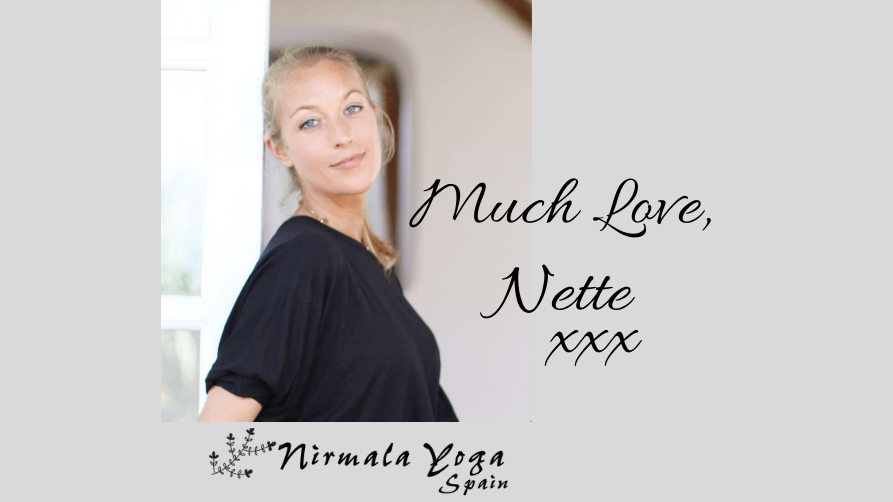
Originally written for & published in the May Nirmala Loveletter, 2018. Edited & Updated March 2024.
Jeannette Amy (Nette) Hopkinson (BSc Hons Sports & Life Sciences) is a compassionate, trauma-informed Yoga Teacher & educator based in Andalusia. Follow on Instagram & Facebook.

